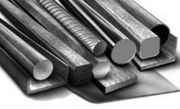There are many interesting facts connected with metal. Even the ancient inhabitants of Norway believed that the poisoning of smelting workers, which were observed during the smelting of silver, was the tricks of Kobolt, an evil spirit. Indeed, during the firing procedure for cobalt arsenic-containing minerals, arsenic oxide is released, which is dangerous to health.
2
A completely different spirit, Nickel, angered the medieval miners of Germany.
It was he who prevented the extraction of copper itself from the ore, which outwardly resembled copper. It was only in the eighteenth century that a metal called nickel was isolated from this ore.
3
For many centuries, it was gold that was considered The most expensive materials in the world.
For centuries, alchemists have found ways to extract it from all sorts of ingredients. It succeeded in 1941, when a method was developed for bombarding mercury atoms with fast neutrons, and as a result, radioactive gold was obtained.
4
It is interesting that if we count the gold mined in the world in the entire history of mankind, then the total amount of this metal will be 165 thousand tons.
Moreover, half of this amount is from South Africa. And if one ingot is cast from this gold, then it will be a cube, the side of which is 20 m.
5
The most expensive cutlery of Napoleon III was aluminum, only open and unusual for those times metal. They were served during solemn dinners exclusively to the emperor and the most honored guests. All other guests used the usual silver and gold appliances.
6
The composition of sea water contains the entire table of chemical elements of Mendeleev, including uranium and gold. However, for industrial purposes, even today we can only use bromine, magnesium and table salt.
7
The relative concentration in stars and galaxies of elements heavier than helium is called metallicity in astrophysics. It is this parameter that determines the age of the stellar system. It is known that the very first stars practically did not contain metals. But each subsequent generation was richer in them than the previous one.
8
Only seven percent of the world's titanium is used in mechanical engineering. Thirteen percent is used in the paper industry, twenty percent for plastics and sixty percent for coloring products.
9
Mercury excellently destroys the surface film inherent in aluminum oxide, without which aluminum is oxidized in air for a short time. This is the main reason why mercury is not allowed on airplanes. In the event of a spill, it can compromise the integrity of the fuselage.

